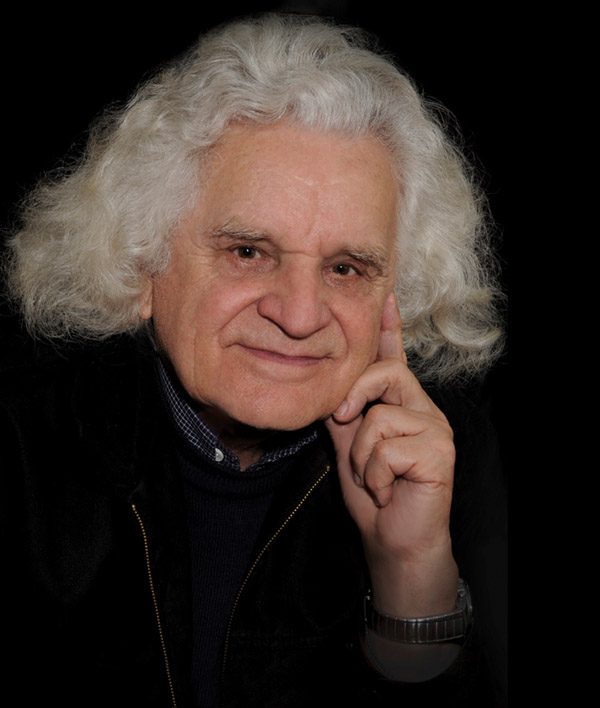
DOYEN: G√ľnther Komnick
DOYEN of Cape Town photographers G√ľnther Komnick, the multiple award winning photographer and graphic artist, celebrates 50 years of artistic activity in the city, this year with the publication of his book Impressions. At the age of 80, he has stayed at the top of his game, responding as he says to that creative urge, "to what is inside", to make his images comes alive. Impressions, a selection of superb and evocative images taken in places as far a field as Namibia, South Africa, Syria, Jordan and Egypt is a grand testimony to this interplay between the outside world and the way the inner eye interprets that outer world. "To see things, to not be blind to the beauty that is around you. Nature to me is inspiring, and it is the emptiness, the simplicity which makes it great. In Impressions we not only see places, but the people in and of those places, and how they merge into their environment, how their eyes reveal and gestures and way of being reflect an inner world. "I always look for beauty and depth," he says, adding, "you must respond to the drive within you, otherwise you won't find any peace. You always have to create. When you're hungry you have to eat. In the same way you must feed your mind. If you stop creating, you're nothing."
These words have a special poignancy considering how Komnick started in the business, one which has become completely transformed with the arrival of digital photography. Komnick who first ventured into graphic art as a trained lithographer has seen enormous changes not only in his professional field, but also in his life. Born in Insterburg in the formerly German province of East Prussia in 1929, he lived through the monumental events of World War II, digging anti-tank trenches in his youth, to spend the end of the war in a Russian labour camp, from the ages of 15 to 18. It was during these years in the labour camp that as he says "you learn to appreciate the little things, you take nothing for granted".
With people dying all around him from typhus and starvation Komnick says: "I never throw any food away. When you learn what a piece of bread can mean, you can't throw it away." It was during the experience in the camp that he started making his haunting sketches of people, often on the threshold of death. "In the camp you develop your instincts for fear, for survival and to recognise danger. At the time I hated the Russians, but over the years I realised it was the whole system that was responsible for the suffering, not the individual soldiers." Komnick recounts how his mother would take a single potato and boil it and the ensuing soup would constitute a meal for three people.
After having escaped from the camp in Pomerania, now in Poland, to L√ľbeck in northern Germany he made his way with a friend to Donauesching in the Black Forest in south-western Germany, with a view to becoming sculptor. The area is renowned for its tradition of wood sculpture. He worked for a number of years as a farm hand before being given his big break by one Joseph Bromberger, who set him on is way to become a lithographer. Komnick recounts how as a farm worker his job including filling in bomb craters, left by American stray bombs and cleaning out cowsheds and harvesting. "This brother who had a brother who was an architect and he noticed that I wasn't really a farm labourer and that I could become a sculptor. He said his best friend was a sculptor, had won awards and what have you, but that he was starving, that it was not a job you can make a living from. Then in November in 1949 I was cleaning the cowsheds when this man came, Joseph Bromberger and took me on as an apprentice as a lithographer. The family took me in as part of their family."
After his apprenticeship, Komnick continued his training in Switzerland, first in Basel and then in Bern, before seeing an advertisement for South Africa, and he came to this country in 1956 and after a period in Johannesburg set up his own graphic design business in Cape Town.
Impressions is the culmination not only of years of professional experience, but also of personal experience, as Komnick recounts: "I knew I had no chance to do matric. I came out of a labour camp; I hardly had shoes or clothes. So while in Switzerland, every night I went to evening classes and educated myself, including studying life drawing. At the time lithographers were the designers of the day. You worked on stone, engraving on stone." There can't be many professional photographers still working today who went from lithography to digital. With photography, Komnick says, he understood that "you can't do everything by hand". With his first camera (a Rolleiflex), Komnick's artistic, inspirational impulse could then graft itself on his profession as a graphic artist.
Komnick is a lifetime Associate of the Royal Photographic Society and has won various awards, international and local, including awards for his illustrations of children's books. Coming from a family of artists, Komnick retains his individual, pioneering approach to visual art: "I always had my own way of doing things. I like pictures that tell a story, that have a meaning. If you have to explain what a picture is all about, then it's not a picture."